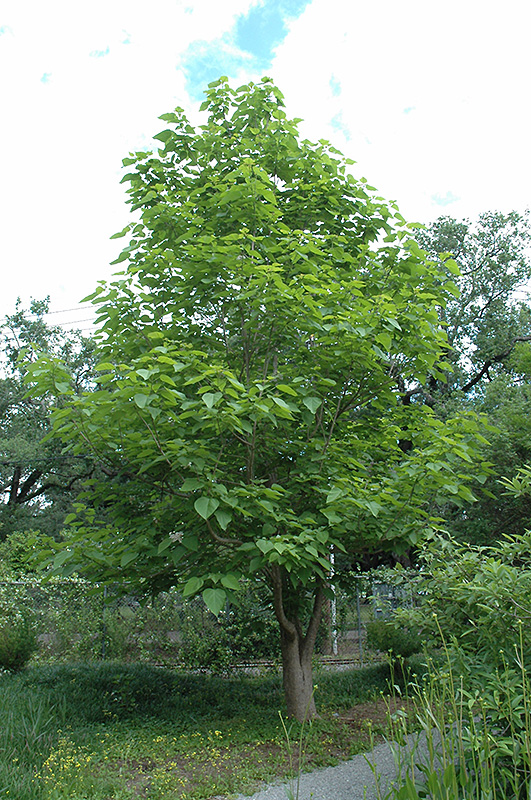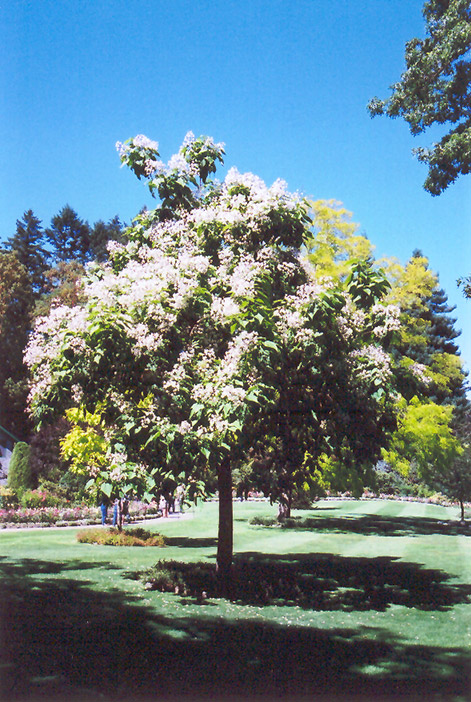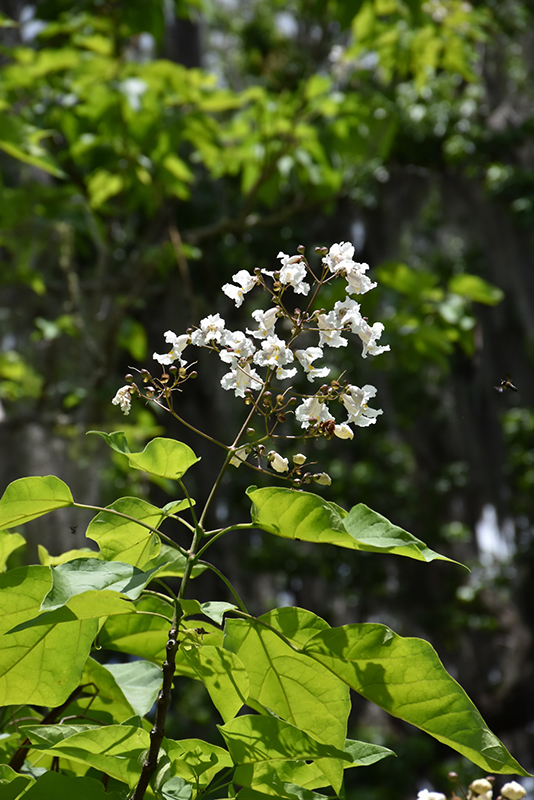Height: 40 feet
Spread: 40 feet
Sunlight:
![]()
![]()
Hardiness Zone: 4b
Other Names: Common Catalpa
Description:
A medium sized shade tree with enormous leaves resulting in a very coarse texture, use where this is required; very showy white and purple flowers in early summer, long narrow fruits in fall, extremely adaptable
Ornamental Features
Southern Catalpa features showy panicles of fragrant white orchid-like flowers with yellow throats and purple spots rising above the foliage in mid summer. It has green deciduous foliage. The enormous heart-shaped leaves do not develop any appreciable fall color. The fruits are showy brown pods displayed from mid summer to late winter. The fruit can be messy if allowed to drop on the lawn or walkways, and may require occasional clean-up.
Landscape Attributes
Southern Catalpa is a deciduous tree with a more or less rounded form. Its strikingly bold and coarse texture can be very effective in a balanced landscape composition.
This tree will require occasional maintenance and upkeep, and is best pruned in late winter once the threat of extreme cold has passed. It is a good choice for attracting hummingbirds to your yard, but is not particularly attractive to deer who tend to leave it alone in favor of tastier treats. Gardeners should be aware of the following characteristic(s) that may warrant special consideration;
- Messy
Southern Catalpa is recommended for the following landscape applications;
- Accent
- Shade
Planting & Growing
Southern Catalpa will grow to be about 40 feet tall at maturity, with a spread of 40 feet. It has a high canopy with a typical clearance of 7 feet from the ground, and should not be planted underneath power lines. As it matures, the lower branches of this tree can be strategically removed to create a high enough canopy to support unobstructed human traffic underneath. It grows at a fast rate, and under ideal conditions can be expected to live for 80 years or more.
This tree does best in full sun to partial shade. It is an amazingly adaptable plant, tolerating both dry conditions and even some standing water. It is considered to be drought-tolerant, and thus makes an ideal choice for xeriscaping or the moisture-conserving landscape. It is not particular as to soil type or pH, and is able to handle environmental salt. It is highly tolerant of urban pollution and will even thrive in inner city environments. This species is native to parts of North America.
This tool is an online resource representing many of the varieties that we carry over the course of the season, and is intended for informational purposes only. Inventory varies seasonally, so we cannot guarantee that every plant will be in stock at all times - please contact the store directly for current availability. It does not include our entire selection of plants, so be sure to visit our store to see varieties that may not be represented on this list.


